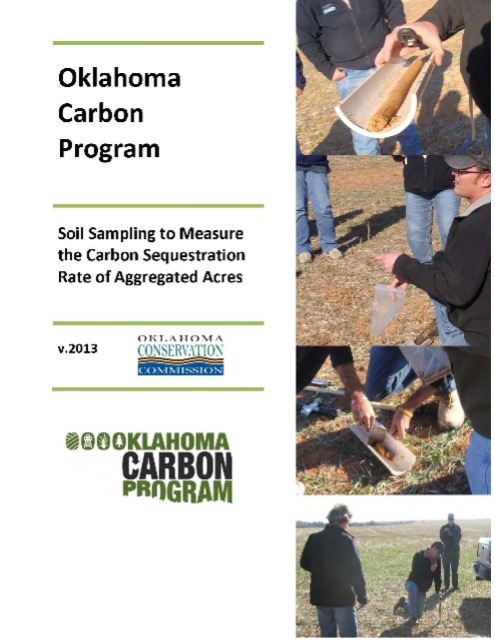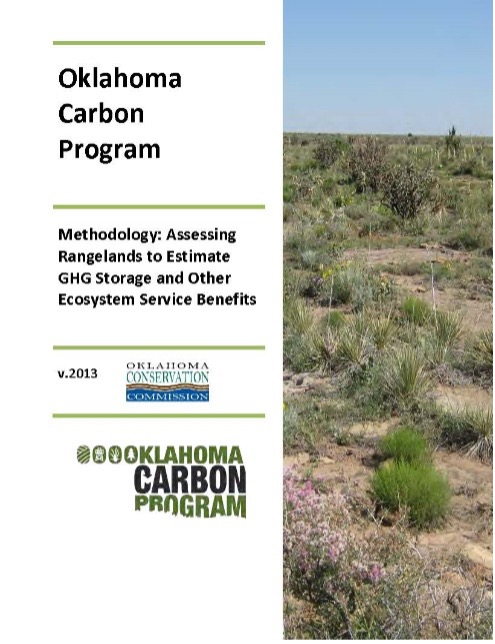The Conservation Commission offers fee-based verification of Oklahoma agriculture and forestry offsets tostate approved aggregators participating in the carbon program. Verification is the process of determining if a practice or project is sequestering the amount of carbon dioxide that is claimed or expected to occur as a result of a particular activity. Verification is conducted by third party state approved verifiers — not the offset provider, aggregator, or buyer. We have a 4-Level Verifier Training Program in place for participating Oklahoma conservation districts. For information on what is assessed during verification, click on an image below to view the protocol for no-till, rangeland, grassland, or soil sampling.




Verification of carbon offsets occurs in two phases:
- Field verification
- A verifier visits and visually assesses the offset or project site, takes pictures, and documents the field condition. We are working with OSU to collect soil samples from some fields for research purposes. The findings are not used to determine carbon offset value.
- Document verification
- Agriculture – Field verification forms and photographs of each field are reviewed to determine whether the practice is meeting the standard to sequester the expected amount of CO2. For rangeland, verification results and management records are used to determine adherence to the grazing management plan.
- Forestry – Field verification forms and photographs of each stand are reviewed to determine whether the forest stewardship plan is being adhered to.
- Geologic – Project-related documents are reviewed to determine if they substantiate the amount of carbon dioxide that an applicant claims to have sequestered. Includes mass balance calculation of injected and recovered CO2.
Visit the Oklahoma Carbon Offset Registry for information on Oklahoma carbon offsets verified by the Oklahoma Carbon Program.